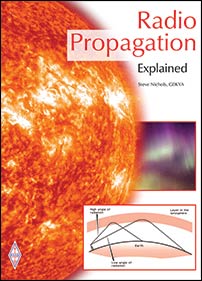I have now
updated my UK HF coverage prediction maps for this quarter using the
current smoothed sunspot numbers (SSNs). The maps for April to
December can be used as being representative, but will be updated as
and when the SSNs are updated later in the year.
On
the current evidence it looks like we passed the peak of Sunspot
Cycle 24 in the Spring of 2014. However, the cycle still seems to
have some life left in it.
The peak solar flux
index (SFI) for the cycle occurred on 23rd October 2014
with 227, although there were plenty of other times when it bettered
200, including January 2014, October and December 2014.
On an annual basis,
2014 had the highest average daily sunspot numbers of any year
since 2002, according to the ARRL, although the peak solar flux
indices were higher in 2002, hitting 261 on 29th January
2002.
The highest peak
solar flux indices of cycle 23 were actually seen in 2001, with 283
being reached on 26th September 2001. This cycle has been
poor in comparison.
But what next? What has been very apparent is the general increase in
solar flares and coronal mass ejections (CMEs) recently. This has led
to disturbed geomagnetic and HF conditions and is typical of the
downward trail away from a sunspot maximum.
Over the next
quarter we can expect to see overall sunspot numbers decline
slightly, with solar flare and CME activity remaining high. Expect to
see SFI numbers in the range 120-180, still good enough to provide
good openings to DX on the higher bands at times.
We may see the cycle
peak up yet again before it finally tails away, but are we likely to
see the SFI go above 200 again? Who knows.
You can see my UK HF prediction maps at http://www.infotechcomms.co.uk/propcharts/ or use the link top right.









